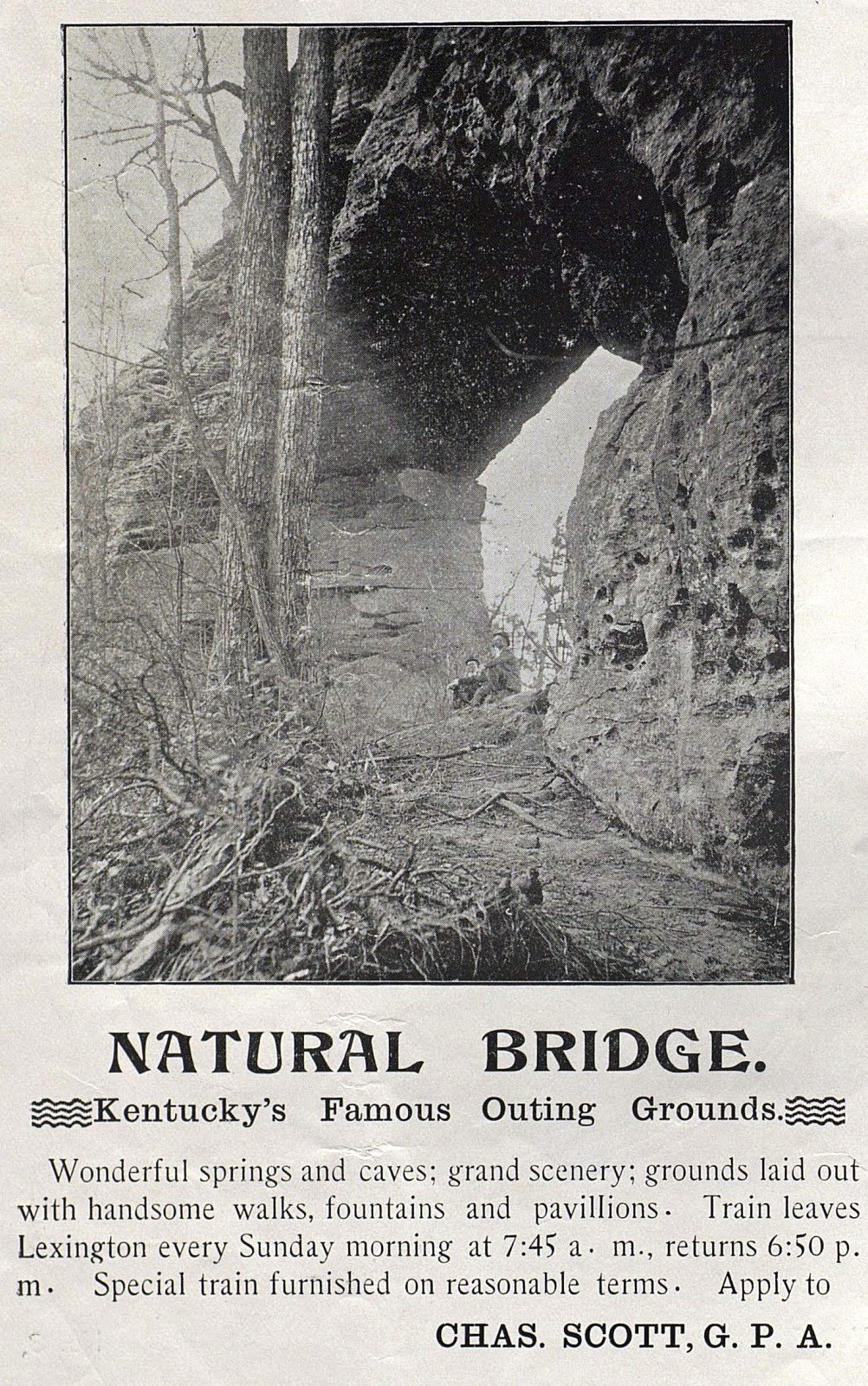By Whitney Hale
In celebration of the University of Kentucky's upcoming sesquicentennial in 2015, the 41st of 150 weekly installments remembers a popular leisure and educational travel option for the institution's students and faculty.
installments remembers a popular leisure and educational travel option for the institution's students and faculty.
The April 1896 Cadet announced: "Fall in for Natural Bridge! A Gala Day! Let everybody go. Students and friends in the city. The Lexington and Eastern Railroad can’t be excelled for scenery. All who went last year, know that the trip was far superior to expectation; since then, the Railroad Co. have spent thousands of dollars, and now have the best place in the country for picnic parties and pleasure seeker. Go!
Tickets for the road trip and admission to the grounds $1, for sale by A.S. Reese and R.F. Sever, at college, and J.W. Moore of the city. Train leaves C. & O. Depot at 7:30 a.m., May 2, and returns from Natural Bridge at 4:40 p.m."
The Lexington and Eastern Railway Company was initially incorporated as the Kentucky Union Railway Company in 1872. The railroad's primary goal was to reach coal and timber resources in southeastern Kentucky. The original line was constructed in 1886 from Kentucky Union Junction (now L and E Junction) in Clark County to Clay City in Powell County. This line was extended west to Lexington in 1890, then east to Jackson in 1891 for a total of 92 miles.
On Oct. 16, 1894, the Kentucky Union Railway was reorganized as the Lexington and Eastern (L&E) Railway Company. The Louisville and Nashville Railroad Company purchased the L&E in November 1910 and extended the line approximately 100 miles from Dumont (near Jackson) to McRoberts at the head waters of the North Fork of the Kentucky River.
In addition to trips for leisure, faculty utilized the resources and hands-on training opportunities available at Natural Bridge for field exercises in geology, botany and entomology.
This story on UK's history is presented by UK Special Collections. Special Collections is home to UK Libraries' collection of rare books, Kentuckian, the Archives, the Louie B. Nunn Center for Oral History, the King Library Press and the Wendell H. Ford Public Policy Research Center. The mission of Special Collections is to locate and preserve materials documenting the social, cultural, economic and political history of the Commonwealth of Kentucky.
